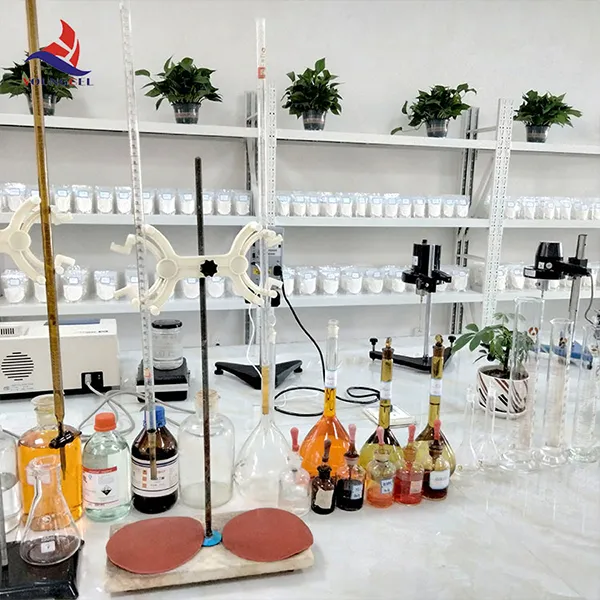Methylcellulose and Hydroxypropyl Methylcellulose Key Players in the World of Formulations
Methylcellulose (MC) and Hydroxypropyl Methylcellulose (HPMC) are two modified cellulose derivatives that have gained significant importance across various industries, particularly in pharmaceuticals, food, and construction. Their unique properties, such as water solubility, gel formation, and thickening capabilities, make them essential ingredients in numerous applications. Understanding their features, benefits, and uses can provide insights into why they are key players in formulation science.
What are Methylcellulose and Hydroxypropyl Methylcellulose?
Methylcellulose is derived from cellulose, a natural polymer obtained from plant cell walls. Through chemical modification, cellulose is methylated to produce MC. This process results in a compound that is soluble in cold water, forming a viscous solution. It has applications in various areas because of its thickening, emulsifying, and stabilizing properties.
Hydroxypropyl Methylcellulose, a more advanced derivative of methylcellulose, incorporates hydroxypropyl groups in addition to methyl groups. This modification enhances its thermal stability and increases its solubility in both hot and cold water while maintaining its ability to form gels upon cooling. The unique properties of HPMC make it more versatile than MC, leading to its widespread use in various applications.
Applications in Pharmaceuticals
In the pharmaceutical industry, both MC and HPMC are widely utilized as excipients in drug formulation. Their excellent film-forming properties allow them to be used as coating agents for tablets and pills, which can improve the release profiles of active ingredients. Furthermore, they act as stabilizers and thickening agents in suspensions, ensuring that the active compounds remain evenly distributed throughout the liquid medium.
HPMC is particularly favored for use in oral drug delivery systems. Its ability to form hydrogels enables controlled release formulations, allowing for sustained drug release over an extended period. This feature is especially beneficial in chronic disease management, where maintaining consistent drug levels in the bloodstream is crucial.
methyl cellulos hpmc

Role in the Food Industry
In the food sector, methylcellulose and HPMC are used as food additives and are classified as Generally Recognized As Safe (GRAS) substances by the U.S. Food and Drug Administration (FDA). They serve as thickening agents, stabilizers, and emulsifiers in various products, ranging from sauces to dairy items. Their ability to retain moisture and improve texture makes them valuable in creating low-fat and gluten-free products, as they can mimic the mouthfeel and consistency usually provided by fats or gluten.
One notable application of MC in the food industry is in the production of plant-based meat substitutes. When hydrated, methylcellulose forms a gel-like structure that helps bind other ingredients together, creating a texture that resembles conventional meat products. This application aligns with the growing consumer trend towards plant-based diets and sustainable eating practices.
Contributions to Construction and Other Industries
Beyond pharmaceuticals and food, methylcellulose and HPMC find applications in the construction industry. They are used as additives in cement and plaster to enhance workability, prevent cracking, and improve adhesion. Their water retention properties also help in maintaining the moisture content of the mixtures, critical for ensuring proper curing.
Additionally, these cellulose derivatives have applications in personal care products, such as lotions and creams, where they function as thickening agents and stabilizers, enhancing product texture and consistency.
Conclusion
Methylcellulose and Hydroxypropyl Methylcellulose are versatile compounds that have established their roles across multiple industries. Their unique properties provide significant benefits, making them indispensable in various formulations. As industries continue to evolve and seek innovative solutions to meet consumer demands, the relevance and utility of MC and HPMC are likely to expand further. With ongoing research and development, these cellulose derivatives will continue to play a pivotal role in shaping the future of product formulation and application across numerous sectors.
-
Rdp Powder: Key Considerations for Wholesalers in the Building Materials IndustryNewsJul.08,2025
-
Key Considerations for Wholesalers: Navigating the World of Hpmc - Based ProductsNewsJul.08,2025
-
Hpmc Detergent: Key Considerations for WholesalersNewsJul.08,2025
-
Key Considerations for Wholesalers: China Hpmc For Tile Adhesive, Coating Additives, Concrete Additives, and MoreNewsJul.08,2025
-
Crucial Considerations for Wholesalers: Navigating the World of Construction MaterialsNewsJul.08,2025
-
Key Considerations for Wholesalers Sourcing Additive For Cement, Additive For Concrete, Additive For Putty from Additive Manufacturer Shijiazhuang Gaocheng District Yongfeng Cellulose Co., Ltd.NewsJul.08,2025




